The latest research results of China Agricultural University reveal that grass-roots cadres face seven puzzles in rural revitalization
"Many students earn money outside, and they will think that I am useless in doing these things at the grassroots level in towns and villages, and tell them how many people I have served and how many people have solved their difficulties. Many of them don’t understand or understand"; "My wife said that I was so tired at work and didn’t have much money. I don’t know what to do. I told him angrily that I couldn’t slander my work. " It is both difficult and loving, which is a true portrayal of the inner entanglement of grassroots cadres. A study by Professor Ye Jingzhong from the School of Humanities and Development of China Agricultural University pointed out that grassroots cadres have some confusion about the system design and policy implementation of rural revitalization, and they have some confusion about their own positioning and role cognition.
This research has been carried out in 10 villages in Shandong, Hunan, Shaanxi, Zhejiang, Hebei and other five provinces since March 2021. Focusing on the theme of "rural revitalization from the perspective of farmers", 529 questionnaires were completed and 154 interviews were completed with grassroots cadres, new business entities and small farmers. The research result "Rural Revitalization from the Perspective of Farmers" was recently published by Social Science Literature Publishing House.
The research points out that the confusion and confusion of grass-roots cadres are related to their working life and ideological psychology, as well as to the steady progress of rural revitalization and the modernization of governance transition. The confusion and confusion of grassroots cadres are mainly manifested in seven aspects.
First of all, the theoretical study time is short, the policy is vague, and the understanding and implementation are not in place. It is found that grassroots cadres generally lack the time and energy for theoretical study and have a slow understanding of policies. A grassroots cadre said, "There is basically no time to read the policy documents during the day, and they all take time to read them during the lunch break; It is generally impossible to settle down and read the documents during the day, and it is only possible to sit down and sort it out at night. " Lack of policy study often leads to confusion and difficulties in work, especially the failure to master some systematic and programmatic documents often leads to temporary, short-sighted or "one size fits all" practices in work.
In addition, some system designs and policies are ambiguous, which makes it difficult for grassroots cadres to understand and implement. For example, grassroots cadres reflect that in the process of connecting poverty alleviation with rural revitalization, there are obvious problems of vague division of labor and overlapping work among government departments. Grassroots cadres said, "Hard work is not pressure, but coordination between different departments and process assessment, which must be issued as soon as possible ‘ Sanding ’ The plan, otherwise the name is not justified. "
Second, there are many restrictions on policy implementation, deviations in work objectives, and difficulties in path-dependent innovation. It is found that grassroots cadres often lack autonomy and tend to focus on indicators and processes. On the one hand, the policy is so restrictive that it is difficult for grass-roots cadres to carry out innovative exploration according to local conditions, and the goal of their work is to "complete the instructions of superiors" rather than "promote local development" to a certain extent.
On the other hand, the strict accountability mechanism forces the simplification of the implementation policy. Although "one size fits all" has been criticized, it also means that mistakes will not be made. A grass-roots cadre said, "Grass-roots work is rather not to do it, to do it badly, and not to violate the procedures." Under this concept, there will inevitably be path dependence in carrying out work, because there will be no mistakes according to the old method, but it will inevitably limit exploration and innovation.
Third, the masses are highly dependent on the government, and it is difficult for the masses to launch and the masses are not actively involved. The investigation found that the masses had obvious dependence thoughts in many rural jobs, which brought challenges to grassroots governance. Some grassroots cadres pointed out that "a lot of work in rural areas is done by cadres and watched by the masses." The survey shows that the proportion of farmers who believe that the industrial development, environmental governance, rural customs civilization and effective governance in rural areas mainly depend on village cadres reach 37.3%, 53.5%, 54.6% and 76.6% respectively. Some villagers said, "everything in the village depends on cadres, and nothing can be done without cadres."
On the contrary, this kind of dependent thinking will aggravate the indifference of the masses to collective affairs. Many farmers think that rural revitalization means waiting for the state to take money to revitalize the countryside, which leads to practical difficulties in mobilizing the masses at the grassroots level. In addition, when people see that grass-roots services in other areas are ahead of the local ones on the Internet, they will also have incomprehension or complaints, which will add new difficulties to grass-roots mass work.
Fourth, the allocation of resources is upside down, human and financial rights are lacking, and basic management lacks support. Investigation shows that grassroots cadres regard the lack of human, financial and power resources as the main problem faced by grassroots work.
Fifth, the supervision and assessment are frequent, the indicators are hollow, and it is difficult to implement the burden reduction policy. It is found that supervision makes grass-roots cadres tired of coping, and assessment itself has become the core goal of grass-roots work. First, there are many unannounced visits. Different departments frequently go to the grass-roots level, but they generally only check and do not give guidance. Second, the process assessment is heavy. At present, one-sided emphasis on leaving traces of work, regardless of the reality at the grassroots level, has turned grassroots cadres into "cousins." Third, the evaluation system is vague. Some evaluation index systems are not only divorced from reality, but also very complicated, which is difficult for ordinary people to understand and grasp the real situation. Fourth, the pressure of accountability is great. There are too many things that are rejected by one vote, and the policy of territorial management and maintaining stability leads to abnormal governance. A grassroots cadre pointed out that "the inspection from above is mainly to pick problems, and the opinions of a few villagers are often used to deny grassroots work, regardless of the opinions of the majority of villagers."
Sixth, young cadres are hesitant, it is difficult to take root at the grassroots level, and there is a big psychological gap.
Seventh, there is a crisis of professional identity, lack of social identity, and lack of expression of grassroots voices. Investigation shows that grass-roots cadres are prone to self-doubt and self-denial when dealing with rural areas and farmers for a long time and facing the impact of the outside world, thus forming a crisis of professional identity.
The research points out that in the process of rural revitalization, we should deeply understand the expectation and confusion of grassroots cadres, deeply understand their behavior and cognition, and better play the role of grassroots cadres in rural revitalization by promoting the transformation of grassroots governance model.
The research suggests that we should strengthen the dissemination of policy documents and strengthen and improve the cadre training system; Policy implementation should leave some space for the grassroots and establish a more reasonable fault-tolerant and error-correcting mechanism; We should change the government’s practice of doing everything, and reverse the thinking of farmers waiting for the government to take money to revitalize the countryside; The allocation of resources should be further tilted to the grassroots to provide more support to the grassroots; We should solve the problem of formalism at the grassroots level and resolve the concerns of young cadres at the grassroots level through systematic support.
Xuzhou area Mercedes-Benz GLE coupe price reduction news! The highest discount 90,000, not to be missed
[Autohome Xuzhou Promotion Channel] Exciting news! Now, a grand promotion is going on in Xuzhou. As a star model in the luxury SUV market, the Mercedes-Benz GLE coupe has won the love of many fans with its elegant design and excellent performance. This promotion is unprecedented, with a cash profit of up to 90,000 yuan, making the Mercedes-Benz GLE coupe model, which originally started at 753,800, more attractive. If you want to seize this rare car purchase opportunity, you may wish to click "Chatti Car Price" in the quotation form to explore the most competitive preferential price with practical actions. This is a rare opportunity, not to be missed!

The Mercedes-Benz GLE Coupe is a luxury SUV that combines elegance and power, and its front face design is full of the iconic elements of the Mercedes-Benz family. The wide air intake grille is chrome-plated, exquisite and atmospheric, and complements the sharp LED headlights, showing a strong sense of movement. The body lines are smooth, and the back-style styling design not only enhances the visual impact, but also reflects the unique charm of the coupe SUV. The overall style blends luxury and dynamism, and every detail exudes the noble temperament of the Mercedes-Benz brand.

The Mercedes-Benz GLE coupe is elegant and powerful with its exquisite side design. The body size is 4941mm*2018mm*1716mm and the wheelbase is up to 2935mm, which gives it a spacious interior space. The smooth and dynamic lines on the side highlight the unique charm of the luxury SUV. The front and rear tires are 275/50 R20, and the size of the tires not only guarantees the stability of the driving, but also coordinates with the body proportions, showing its exquisite detailing. The wheel style is exquisite, which further enhances the overall visual effect, allowing people to recognize its identity at a glance.
The Mercedes-Benz GLE coupe is known for its refined and luxurious interior style. It uses a steering wheel wrapped in exquisite leather, which provides manual and electric up, down and back adjustments, giving the driver a comfortable grip. The 12.3-inch central control screen stands in the driver’s line of sight, is equipped with multimedia systems, navigation and telephone functions, and supports automatic speech recognition control for easy operation. The seats are made of imitation leather, and the main and passenger seats are equipped with front and rear adjustment, backrest adjustment, height adjustment and waist support to ensure ride comfort. The front seats are also equipped with heating and ventilation functions, and the driver’s seat is also equipped with electric memory function, which is extended to the passenger seat. In addition, the car is also equipped with multiple USB/Type-C ports, as well as wireless charging capabilities for mobile phones, to fully meet the convenient needs of passengers.

The Mercedes-Benz GLE Coupe is powered by a powerful 2.0T turbocharged engine with a maximum power of 190 kilowatts and a power output of 258 horsepower. This engine, combined with a sophisticated 9-speed manual transmission, ensures a smooth driving experience and efficient power transmission, meeting drivers’ expectations for performance and handling.
In such an era full of competition and opportunities, the Mercedes-Benz GLE coupe has always won the favor of consumers with its excellent performance and luxury taste. Now, in order to give back to the majority of Mercedes-Benz lovers, we have specially launched a limited-time price reduction promotion. You will have the opportunity to own this luxury coupe that combines power aesthetics and comfortable driving at a more affordable price. Seize this rare opportunity, let us drive the Mercedes-Benz GLE together, ride the future, and enjoy the fun and distinguished experience of driving. For details, please visit the exhibition hall or follow our official website, let us witness this historical moment together!
The new Audi A6Avant/A6Allroad is officially launched.
[car home new car on the market] On November 10th, the new Audi A6 Avant/A6 allroad was officially launched.The prices of the two models are 506,800 yuan and 584,800 yuan respectively.
● Audi A6 Avant


"The picture shows the 2023 Audi A6 Avant avant-garde 45 TFSI selected dynamic type"
In terms of appearance, the new car will come standard with black appearance kit and matrix LED headlights, and the overall sports atmosphere is very rich. In addition, the new car will also be equipped with 19-inch double-five-spoke diamond cutting process graphite gray wheels, which will further play an embellishment role. In terms of color matching, the new car will add two body colors, Red Rabbit and askari Blue, on the basis of classic color matching, such as cyclone black, glacier white, foil silver, tianyun gray, sky blue, star gray and legendary black. Among them, askari Blue is named after the longest Spanish track-askari circuit, which further highlights the sports genes.


At the interior level, the new car will adopt a three-screen cockpit layout, which has a strong sense of science and technology. At the same time, the front sports seat of the new car also comes standard with Dinamica microfiber/leather combination, which highlights the sports attributes. On the configuration level, the new car will provide brand-new volcanic ash wood trim strips, natural brown olive wood interior trim strips, Dinamica microfiber surface interior trim strips, and update the S line sports suit, mainly optimizing and adjusting some details.
● Audi A6 allroad


"The picture shows the 2023 Audi A6 allroad quattro 55 TFSI exclusive off-road model"
Audi A6 allroad pays more attention to off-road capability and luxury quality. In terms of color matching, the new car adds Cangyuan Brown on the basis of retaining classic colors such as Cyclone Black, Glacier White, Foil Silver, Star Grey, Manhattan Grey, Legend Black and Sky Blue, providing a total of eight exterior color choices, including Legend Black, Foil Silver, Glacier White and Sky Blue. It can also be equipped with the same color wheel eyebrow, and other colors can be equipped with contrast color wheel eyebrows. In addition, the new car will also be equipped with a matte appearance kit as standard, and the same color and contrast color appearance kits and four kinds of rim options will be provided.


At the interior level, the new car is designed with gray aluminum trim strips in details, creating a certain luxurious atmosphere. At the same time, it will also come standard with hardware such as comfortable headrest, three-spoke leather multifunctional sports steering wheel and humanized configuration such as remote engine start, remote air conditioner and welcome light.
In terms of power, the new Audi A6 allroad 55TFSI exclusive off-road model is equipped with a 3.0 TFSI V6 engine, matched with a 7-speed S Tronic transmission and 48V light mixing technology, and the 0-100km/h acceleration time is 5.6 seconds. In addition, the ultra quattro intelligent four-wheel drive system will not be absent, and it has been fully optimized in terms of intelligence, economy and ability to get rid of difficulties. (Text/car home Duandi)
"Sword Rain" plays face-changing, Guo Xiaodong and Zheng Yusheng interpret past and present lives

Zheng Yusheng vs Guo Xiaodong
Directed by John Woo and Su Zhaobin and co-starring Michelle Yeoh, Zheng Yusheng, Wang Xueqi, Lin Xilei, Guo Xiaodong and Jiang Yiyan, the martial arts blockbuster "Sword Rain" uses the "+" trump card, which makes the audience enjoy the full sense of suspense in the film. In particular, the face-changing plot implicitly displayed in the film also makes everyone feel a little melancholy and sentimental. The two handsome men of China and South Korea – Guo Xiaodong and Zheng Yusheng’s interpretation of the past and present life of the male lead Zhang Renfeng has become a major attraction.
Drizzle (Lin Xilei, played) in order to get rid of the killer’s life, she did not hesitate to change her face and renamed herself Zeng Jing (Michelle Yeoh, played). She married Jiang Ah Sheng (Zheng Yusheng, played), an honest man, and wanted to live an ordinary life. In the end, what she did not expect was that Jiang Ah Sheng was not Jiang Ah Sheng, but Zhang Renfeng (Guo Xiaodong, played), who had survived death after being chased by Drizzle and others. Zhang Renfeng, played by Guo Xiaodong, is the earliest male protagonist in the film. Everyone never expected that this swordsman with a jagged sword has super defensive power and the ability to resist fighting is similar to the "undead body" that is popular in the rivers and lakes. Although he was beaten down repeatedly, and even passed through the heart by the sharp sword, he stood up again and again with gritted teeth. In order to avenge his father’s murder, he did not hesitate to change his face, hide his name, and wait for the opportunity to find out the real murderer of his father. Guo Xiaodong and Zheng Yusheng played Zhang Renfeng before and after the change of face respectively. In the film, from Guo Xiaodong’s eyes, everyone saw hatred and sentimentality, and from Zheng Yusheng’s eyes, they saw touching and firm. Although she did not find her father’s killer after plastic surgery, Zhang Renfeng harvested a love in advance.
Guo Xiaodong is well-known for starring in the TV series "New Marriage Times", "The Colonel’s Daughter", movies,, etc., and can be called the representative of the new good man in the Chinese film and television industry; Zheng Yusheng is known as a synonym for Korean beautiful men, and his starring movies have made him famous. Both actors have a large fan base in their countries, and their strength should not be underestimated. It seems that Zhang Renfeng, co-starring these two men, has both the high-quality appearance of an Asian and the personality characteristics of a good man. No wonder it made Slight Rain fall in love.
This time, it was Guo Xiaodong who cooperated with well-known directors from Hong Kong and Taiwan again after the ancient costume blockbuster, and once again showcased his martial arts. The difference was that he completely gave up for the role this time, because there were a lot of PK scenes, and there were many tragic scenes of being hunted down and washed by the flood, so the appearance was often "scarred", but it was such a miraculous Jianghu character who survived a disaster that Guo Xiaodong played vividly, with tenacity and dashing in a sad way.
Development and Reform Commission: Encourage insurance institutions to innovate insurance products and services in life service industry.
Notice of the General Office of the State Council on Forwarding Several Opinions of the National Development and Reform Commission on Promoting the Complementary Level of Life Service Industry and Improving People’s Quality of Life
Guo ban Han [2021] No.103
People’s governments of all provinces, autonomous regions and municipalities directly under the Central Government, ministries and commissions and institutions directly under the State Council:
The National Development and Reform Commission’s "Several Opinions on Promoting the Complementary Level of Life Service Industry and Improving People’s Quality of Life" has been approved by the State Council and is hereby forwarded to you. Please implement it carefully.
the General Office of the State Council
October 13th, 2021
(This piece is publicly released)
Some opinions on promoting the life service industry to make up for the shortcomings and improve people’s quality of life
National Development and Reform Commission
In recent years, China’s life service industry has flourished, which has played an important role in optimizing the economic structure, expanding domestic demand, promoting residents’ employment and ensuring the improvement of people’s livelihood. However, there are also problems such as insufficient effective supply, insufficient convenience and sharing, low quality standards, weak talent support, poor business environment and inadequate policies. In order to promote the life service industry to make up the shortcomings and improve the level, improve people’s quality of life and better meet the people’s growing needs for a better life, we hereby put forward the following opinions.
First, strengthen the supply of public welfare basic services
(1) Strengthen the guarantee of basic public services. Strengthen the capacity building of basic public services in urban and rural education, public health, basic medical care, culture and sports. Seriously implement and dynamically adjust the national basic public service standards to ensure the full coverage and quality of the project. Do a good job in the planning and construction of basic public service facilities on the basis of service radius and service population. Explore the establishment of a third-party monitoring and evaluation mechanism for the shortcomings of public services.
(2) Expand the supply of inclusive sexual life services. In areas where the contradiction between supply and demand is prominent, such as "one old and one young", social forces are introduced to develop inclusive sexual life services with guaranteed quality and affordable prices through government purchase of services, public construction of private enterprises and assistance from private offices. Strengthen the construction of inclusive sexual life service institutions (outlets), and incorporate them into the planning of public service supporting facilities in new and renovated residential areas to make overall plans. Strengthen provincial co-ordination, promote counties and cities to formulate specific measures for the identification and support of community inclusive life service institutions (outlets) according to local conditions, implement unified identification and listing, and carry out social credit commitments.
(3) Vigorously develop community convenience services. Promote public service institutions, convenience service facilities and commercial service outlets to radiate to all urban and rural communities, and promote the extension of community property to develop basic and embedded services. Promote big cities to speed up the development of meal-assisting and home care services for the elderly, and strive to gradually cover more than 80% of communities within five years. Support cities to use social forces to develop nursery service facilities. Promote the construction of a quarter-hour convenient living circle, coordinate the construction and transformation of urban life service outlets, expand the scale of outlets, and improve the layout, business structure and service functions of outlets. Explore community service facilities "one point and multiple uses" to improve the one-stop convenience service ability. Explore the establishment of a "good bad review" evaluation mechanism and quality certification mechanism for community life services.
Second, speed up the completion of short-term service facilities.
(four) to promote the community infrastructure standards. Combined with promoting the renovation of old urban communities and the construction of urban residential communities, we will build comprehensive community service facilities, and set up kindergartens, nurseries, old-age service facilities, health service centers (stations), miniature fire stations, sports and fitness facilities, housekeeping service points, maintenance points, convenience stores, vegetable shops, canteens, public reading and double-creation spaces, etc. To carry out monitoring and evaluation of the area conditions of community basic service facilities.
(five) improve the service facilities for the elderly, children and the disabled. We will promote the aging and child-friendly transformation of urban and rural public service facilities and public spaces. While providing digital and intelligent services, we should keep the necessary traditional service methods. Construction of community teaching points for elderly education, and promotion of the aging transformation of the elderly at home. Carry out child-friendly city demonstration, strengthen the construction of off-campus activity places and community Children’s Home, and develop family nursery. Accelerate the construction of barrier-free environment and the barrier-free transformation of families with severe difficulties, and carry out community rental of rehabilitation AIDS.
(six) to strengthen the construction and operation of service facilities. Around the community to build "one old and one small", public health, national fitness and other service facilities, can be appropriately relaxed in accordance with the law and regulations. On the premise of ensuring safety standards, market participants who provide services urgently needed by the community can rent ordinary houses to set up service outlets. Promote the active use of existing buildings, and support large cities to give priority to the transformation of vacated resources for community services. Promote the government’s low-profit operation mode of providing venues and facilities for free or at low prices, and reduce the cost of inclusive sexual life services.
Third, strengthen the construction of service standard brand quality
(7) Accelerate the construction of industry benchmarking service standards. Support enterprises as the main body, relying on industry organizations, to carry out service industry standardization pilot projects in the fields of pension, child care, housekeeping, property services, etc., and launch a number of benchmarking service standards. Strengthen the quality monitoring, evaluation and notification of life service industry, and promote quality certification in different fields. Promote the construction of "leader" enterprises in the life service industry in various places, focusing on pension, child-rearing, sports, housekeeping and community service, and cultivate a number of demonstration enterprises with honest management and quality service.
(eight) to create a life service brand. Promote local governments to cultivate a number of distinctive service brands in the fields of old-age care, child-rearing, culture, tourism, sports and housekeeping. In-depth implementation of trademark brand strategy, improve the brand system supported by products, enterprises and regional brands. Guide all localities to strengthen the promotion of quality service brands in various forms and channels.
Fourth, strengthen the support of high-quality human resources
(9) Improve the talent training mode of integration of production and education. Support life service enterprises to deepen the integration of production and education, jointly develop curriculum standards with institutions of higher learning and vocational schools, jointly build and share internship and training bases, and jointly carry out teacher training. Those who meet the conditions will be given priority in the construction and cultivation of enterprises with integration of production and education. We will speed up the training of talents who are in short supply in related majors such as pension, child-rearing and home economics, and allow qualified employees in enterprises to receive higher vocational education by means of work-study alternation. Strengthen the cultivation of talents at the undergraduate level, and support higher vocational graduates of nursing, rehabilitation, housekeeping, child care and other related majors to upgrade their academic qualifications. By 2025, we will strive to increase the number of undergraduate students majoring in life services such as nursing, rehabilitation, housekeeping and child care by 100,000 compared with 2020.
(ten) to carry out large-scale vocational skills training. Strengthen life service skills training, promote the implementation of training subsidy policies for rural migrant workers, laid-off and unemployed workers, disabled people and other key groups, and implement cost of living allowance for qualified personnel during training according to regulations. Build a number of high-quality labor training bases in populous provinces, cities and counties. Expand the scale of vocational skills training in life service industry year by year.
(eleven) smooth career development channels for employees. Promote the transformation of the employee system in pension, child-rearing, housekeeping, sports and fitness enterprises, and provide social security subsidies according to regulations for qualified employee enterprises to absorb people with employment difficulties and college graduates. Do a good job in linking the professional skills and working years of employees with the support policies for skilled personnel and the settlement policies for points. Care for employees, protect legitimate rights and interests, and publicize and encourage outstanding models.
V. Promoting digital empowerment of services
(12) Accelerate the development of online and offline integration. Accelerate the promotion of life service market players, especially small and micro enterprises and individual industrial and commercial households, to "use numbers to give wisdom", improve the public service system of e-commerce, and guide e-commerce platform enterprises to provide market players with one-stop and integrated services such as information, marketing, distribution and supply chain according to laws and regulations. Guide various market players to actively expand new service applications such as online skills training, digital health, digital cultural venues, virtual scenic spots, virtual nursing homes, online fitness, and smart communities. Strengthen online and offline integration and interaction, and expand the coverage of quality services through appointment service, contactless service and immersive experience.
(thirteen) to promote the open sharing of service data. On the premise of ensuring data security and protecting personal privacy, we will formulate standards and lists of open sharing of life service data in different fields, and give priority to promoting the opening of public data in tourism, sports, home economics and other fields. Facing market players and employees, we will explore the construction of a service quality user evaluation and sharing platform in different fields, reduce the information asymmetry between service supply and demand, and achieve accurate service supply. Guide and support all localities to strengthen cooperation between government and enterprises, build digital and intelligent infrastructure for key application scenarios of life service industry, and build a platform for supporting smart life in urban communities.
Sixth, cultivate a strong market and activate consumer demand
(fourteen) optimize the functional layout of the life service industry according to local conditions. Promote the eastern region to actively cultivate emerging industrial clusters in the field of life service industry, and take the lead in realizing quality, diversification and upgrading. Support the central, western and northeastern regions to fill the shortcomings of life services, improve the docking mechanism of urban and rural services, promote the high-quality and balanced development of public education services, improve the layout of regional medical centers, and accelerate the development of cultural, tourism and sports services. Support underdeveloped areas and rural areas to develop services such as "eco-tourism+",cultivate rural cultural industries, and enhance the employment ability of people who are out of poverty, especially those who have relocated.
(fifteen) to promote the integration and innovation of service formats. In all fields of life service industry, we will promote mass entrepreneurship and innovation in depth. Innovate the mode of combining medical care with nursing care, and improve the mechanism of deep cooperation and mutual extension between medical care and old-age care institutions. Promote the development of "sports+health" service and build a disease management and health service model integrating sports and medicine. Promote the deep integration of culture, sports, leisure and tourism, and promote the high-quality development of red tourism, industrial tourism, rural tourism and healthy tourism. Promote the integration and innovation of "service+manufacturing", strengthen the application of Internet of Things, artificial intelligence, big data and virtual reality in the fields of health, pension, child care, culture, tourism and sports, and develop health equipment, activity equipment, fitness equipment, cultural and creative products and rehabilitation AIDS, so as to realize the mutual promotion of service demand and product innovation.
(sixteen) to promote the quality of urban life service. Carry out the construction of high-quality living cities, promote local people’s governments to formulate overall solutions for the development of life service industries, and support qualified cities to initiate the establishment of a better life city alliance. Support big cities to build a consumer cluster of life service industry with rich formats, brand collection, comfortable environment, distinctive features and strong radiation-driven ability, and promote small and medium-sized cities to improve their living service consumption carrying capacity. Support local governments to launch a number of representative service scenes and demonstration projects, strengthen the construction of commercial blocks, tourist and leisure blocks and business districts with urban characteristics, and integrate cultural entertainment, tourism and leisure, sports and fitness, catering and accommodation, and convenient living services to create a comprehensive service carrier.
(seventeen) activate the county life service consumption. Accelerate the three-level e-commerce service system and express logistics distribution system in counties and villages, and vigorously promote e-commerce and express delivery into rural areas. Build a rural life service network, promote convenience service enterprises to build service complexes in county towns, set up service stores in towns and villages, and set up service outlets in administrative villages. Regularly carry out medical consultation, culture, movies, sports and other activities in the countryside.
(eighteen) to carry out the promotion of life service consumption. Promote various regions to launch a number of practical and effective measures to promote consumption, and local people’s governments give priority to supporting the areas of life services that people urgently need. Deepen the activities of trade unions in send warm, earnestly do a good job in the welfare and living security of workers, extensively carry out life service projects for workers, and provide professional services such as health management, old-age care, psychological counseling, culture and sports for workers.
Seven, to create a market-oriented legal international business environment.
(nineteen) to improve the level of government service facilitation. Improve the guidelines for the establishment of health care, pension, child care, culture, tourism, sports, housekeeping and other service institutions, and clarify the links and time limits for handling and announce them to the public. Simplify the examination and approval procedures for inclusive sexual life service enterprises, encourage chain operation, and promote the implementation of "one photo and multiple addresses" registration.
(twenty) actively and orderly expand opening up. Improve the management system of national treatment plus negative list before foreign investment access. We will promote the opening of related businesses in the fields of education, medical care and culture in an orderly manner. Support Guangdong-Hong Kong-Macao Greater Bay Area, Hainan Free Trade Port and Pilot Free Trade Zone to simplify the examination and approval process according to law, and make greater efforts to attract and utilize foreign capital. Explore the introduction of overseas domestic vocational training institutions to settle in Hainan.
(twenty-one) improve the supervision and inspection mechanism. Formulate and implement the supervision list of key areas, sort out the on-site inspection items and make them public, and vigorously promote off-site supervision such as remote supervision, mobile supervision, early warning and prevention. Relying on the "Credit China" website and the national enterprise credit information publicity system, we will strengthen the disclosure of credit information of life service enterprises, publicize information such as administrative license, administrative punishment and spot check results in a timely manner, and accelerate the construction of a new credit-based supervision mechanism.
(22) Strengthen the protection of rights and interests. Protect the property rights and legitimate rights and interests of various market entities in accordance with the law, and strictly regulate fair and civilized law enforcement. Maintain fair competition market order and severely crack down on unfair competition. Promote the healthy development of the platform economy, and strictly control illegal activities such as abuse of monopoly position, price discrimination and selling personal information. We will carry out the "Iron Fist" action to investigate and deal with cases in the field of people’s livelihood, and strictly investigate and deal with cases of prepaid consumption "running away from the people", false advertising, illegal fund-raising and so on.
Eight, improve the support policy
(twenty-three) to strengthen fiscal and taxation and investment support. Local people’s governments at all levels should strengthen investment guarantee and co-ordinate all kinds of resources to support the development of life service industry. Relevant funds arranged by various localities should be given priority to supporting inclusive sexual life services. Implement tax policies to support the development of life service industry. Give play to the guiding and inciting role of investment in the central budget, strengthen the construction of facilities such as education, health care, culture, tourism, social services and "one old and one small", and actively support the construction of supporting public service facilities for the transformation of old urban communities. For public service facilities projects with inclusive prices and certain benefits, they are eligible to be included in the support scope of local government special bonds.
(twenty-four) increase financial support. Actively use tools such as refinancing and rediscounting to support the development of agriculture-related fields, small and micro enterprises and private enterprises, including life service enterprises. Guide commercial banks to expand credit loans, increase the number of first-time borrowers, and promote "credit-easy loans" to make more funds flow to small and micro enterprises and individual industrial and commercial households.Encourage insurance institutions to carry out innovation of insurance products and services in life service industry.
(twenty-five) improve the price and land support policies. Pay attention to the connection with the government’s comprehensive investment level, and rationally formulate the basic public service price standard. Fully consider the affordability of local people and the operating costs of relevant institutions, and strengthen the price guidance for inclusive sexual life services. With the approval of the local people’s governments at or above the county level, those who use the existing buildings to set up state-supported industries and industries to provide inclusive sexual services can enjoy the transitional support policy without changing the main body of land use and planning conditions within five years. For community service facilities with a construction area of less than 300 square meters or a total investment of less than 300,000 yuan, the local people’s governments at or above the county level may optimize the procedures for fire control acceptance and filing according to local conditions.
(twenty-six) to enhance the ability of market participants to resist risks. We will improve emergency rescue mechanisms for major epidemics, disasters, accidents, etc., establish green channels in time for market players, especially small and micro enterprises, who are in urgent need of inclusive sexual life services, strengthen the supply of emergency materials, and implement necessary assistance measures such as rent reduction, operating subsidies, tax reduction and financing services. Encourage the development of new formats of life service industry that meet the requirements of prevention and control of epidemic normalization.
Nine, strengthen the organization and implementation
(twenty-seven) improve the overall coordination mechanism. The National Development and Reform Commission, in conjunction with relevant departments, will carry out the construction of high-quality living cities, and all departments will organize and implement relevant construction actions according to the division of responsibilities, do a good job in supporting the development of life service industry in related fields and industries, and improve industry policies, standards and norms.
(twenty-eight) compaction of local main responsibility. Local people’s governments at or above the county level should earnestly fulfill their main responsibilities, formulate action plans for the development of life service industry according to local conditions and urban policies, and study and formulate specific measures. The provincial people’s government should explore the development of life service industry into the scope of performance appraisal of cities and counties to ensure the implementation of various tasks.
(twenty-nine) to strengthen statistical monitoring and evaluation. Improve the statistical classification standard of life service industry, explore the gradual establishment of statistical monitoring system, establish normal operation monitoring mechanism and multi-party participation evaluation mechanism, and gradually form a regular information release system.
(30) Strengthen the publicity and guidance of public opinion. All regions and departments should widely publicize and mobilize, strengthen the guidance of public opinion, do a good job in policy interpretation, take the initiative to respond to social concerns, promptly promote new practices, new experiences and new mechanisms, and create a good atmosphere for the development of the bioactive service industry.
Digitalization of China’s residential service industry for 20 years, exploring the traditional enterprise transformation methodology



Understanding ChatGPT and OpenAI in one article

Titanium media note:This article is from WeChat WeChat official account Universe All Metaverse (ID: All Metaverse 001), written by Yuan Allen, and published by Titanium Media with authorization.
Are you afraid that your job will be replaced by AI? ChatGPT, a chat bot, has exploded social networks in recent days, and global technology giant Microsoft also plans to add 10 billion dollars to it. To what extent is his chat ability, can he really subvert the current artificial intelligence ecology? The following 49 ChatGPT usages may help you to open your cognition.
Yes, creativity, research and code work that we find difficult to replace in traditional cognition may be challenged by this upstart AI with 1.3 billion high-quality parameters. After the measured experience, the author thinks that ChatGPT has the ability to easily pass the Turing test (that is, people mistakenly think it is a conversation with a real person), and its answer is more detailed, convincing and continuous logical reasoning ability than siri, Xiao Bing and other mainstream conversation robots.
At the end of November 2022, the American head artificial intelligence research institute OpenAI released the latest generation of ChatGPT, which broke through one million users in just one week. According to UBS Group AG, ChatGPT has accumulated 100 million users in just two months, which is the fastest consumer Internet product in human history, breaking Tiktok9’s record of breaking 100 million users in nine months.
How does ChatGPT break the stereotype of "artificial mental retardation" of chat robots and create Wow moment for over 100 million users? What is the background and origin of OpenAI, and why it can overtake a number of information technology manufacturers and take the lead? This article will take you to draw a clear line and read ChatGPT and OpenAI in one article.
· ChatGPT:
It is an AI chat robot program developed by OpenAI, which is also often called artificial intelligence language model. This program is mainly based on the large-scale language model of GPT-3.5 architecture and reinforcement learning from human feedback (RLHF).
· GPT-3:
The full name is Generative Pre-trained Transformer-3, which was released in May 2020. It is the third generation natural regression language model developed by OpenAI and adopted by Microsoft in September 2020. GPT— 3 includes 175 billion parameters, which is the largest artificial intelligence model in history.
· GPT-3.5:
The natural regression language model completed in early 2022 includes the supervised learning version of the model text— davinci— 002 and reinforcement learning version text— davinci— 003。 ChatGPT is formed by fine-tuning a model in GPT-3.5 series.
· AIGC:
That is, artificial intelligence generates content, and artificial intelligence independently creates new content forms such as text, image, music, video and code based on training data and generation algorithm model. Acumen research predicts that the AIGC market will reach $110 billion in 2030.
Generative AI:
That is, Generative AI, a general term for AIGC overseas, allows artificial intelligence models to learn components or elements of artifacts from data through various machine learning, and then generates original and reassembled real artifacts (content, products, tasks). These artifacts refer to training data and are similar, but not copied.
· NLP:
Natural language processing technology is one of the core topics of artificial intelligence, which forms feedback by matching combined answers in the answer base through semantic document analysis.
Human feedback reinforcement learning:
Compensation learning with human feedback (rlhf) is used to optimize and adjust the output results of the model by manually scoring the results generated by the model.
Transformer model:
Proposed in 2017, it is a neural network model based on self-attention mechanism, which was originally used to complete translation tasks between different languages, including encoder and decoder, which are responsible for encoding the source language text and converting the encoded information into the target language text information respectively.
Large language model:
Large Language model(LLM) is an AI model that integrates various requirements and adapts to differentiated business scenarios. Through pre-training, I can gain the ability of generation, world knowledge and context learning. After fine-tuning the instructions, I have the ability of emergence. In some texts, I even have a level beyond human beings, which requires great computational support.
Small language model:
The dominant research direction before 2015 is generally used to deal with single or similar tasks, which requires much less data and training than the AI big model, but the overall expression ability is also far from that of human beings.
In essence, ChatGPT is an advanced AI model, which has a very rich range of application answers. This product belongs to the AIGC track, and the answer is generated in the form of text-text. It can also be used as a prompt word to be extended to generate more content, such as text-image, that is, AI painting.
Development history of OpenAI company
OpenAI is an American artificial intelligence research laboratory, which consists of a profit-making organization OpenAI LP and a parent company’s non-profit organization OpenAI Inc Its purpose is to deal with the potential risks brought by the development of artificial intelligence, open its patents and research results, promote and develop friendly artificial intelligence, and benefit mankind as a whole. OpenAI is the unicorn behind the AI model ChatGPT, GPT-3, DALL-E 2 and the AI dialogue product ChatGPT, with a recent valuation of 29 billion US dollars.
December 2015:
Elon Musk and Greg Brockman (former Stripe CTO, now Chairman & President), Sam Altman (former President of YC, now CEO) and Ilya Sutskever (Geoffery Hinton, father of neural network, now chief scientist) and others founded OpenAI in San Francisco. The start-up capital is as high as $1 billion, including the fundraising they have completed from friends and relatives, including Reid Hoffman, co-founder of Linkdin, Peter Thiel, co-founder of Paypal, Jessica Livingston (co-founder of YC), and even AWS, YC and Infosys.
In 2016:
OpenAI developed the first intelligent system, which defeated the professional players in the Dota2 game.
In 2017:
OpenAI released GPT-1, which is a language processing model with 117 million parameters based on the encoder Transformer.
February 2018:
Elon Musk resigned from OpenAI.
In 2018:
OpenAI has received a new batch of donations from individual investors, including game developer Gabe Newell, Skype founder Jaan Tallinn, and former American and Canadian Olympians Ashton Eaton and Brianne Theisen-Eaton.
In 2018:
OpenAI cooperated with Microsoft to launch AzureAIPlatform, which is a new project to make it easier for developers to build and deploy AI applications.
March 1, 2019:
OpenAI LP subsidiary was established for profit. In the same period, OpenAI officials announced the pre-seed round investment from ReidHoffman Charity Fund and Khosla Ventures at that time, and the amount was not disclosed.
July 2019:
Microsoft injected $1 billion into OpenAI. This strategic investment makes Microsoft Azure the "exclusive" cloud computing service provider of OpenAI.
In 2019:
OpenAI released GPT-2, which is a more powerful language processing model of GPT-1, with 1.5 billion parameters after the park. More tasks are added, and its data set and model parameters are expanded.
In 2020:
OpenAI released DALL-E, a creative AI system that can be described as an original image according to this book.
June 2020:
OpenAI released GPT-3, which is the strongest language processing model in the past, with parameters as high as 175 billion. Massive training has created a strong performance of GPT-3 in article writing and representative writing.
September 2020:
Microsoft obtained the exclusive license of GPT-3.
In 2021:
OpenAI launched an AI venture capital fund with a total amount of 100 million US dollars. The LP behind it includes Microsoft and other partners. OpenAI hopes to invest in industries where AI technology can have a transformative impact, especially in medical insurance, education, climate change and tools to improve productivity.
January 2022:
OpenAI received $250 million in Series A financing.
November 30, 2022:
OpenAI released ChatGPT, which attracted millions of users in a week. It can answer informative and open questions, and can also interact continuously according to the context, and can create fluent poems, novels and even code content.
In 2022:
OpenAI’s annual revenue is about 36 million US dollars, its expenditure exceeds 544 million US dollars, and its annual loss exceeds 500 million US dollars.
January 2023:
Microsoft announced that it will invest $10 billion in OpenAI with a valuation of $29 billion, and all its products will integrate ChatGPT across the board. In addition to the previously announced search engines Bing and Office, Microsoft will also integrate ChatGPT in the cloud computing platform Azure, and Azure’s OpenAI service will allow developers to access the AI model. Microsoft CEO Nadella said that every product of Microsoft will have the same AI capability and be completely transformed.
At the end of January 2023:
Just two months after its launch, ChatGPT has exceeded 100 million monthly users at the end of January 2023, making it the fastest growing consumer application in history.
At the end of January 2023:
ChatGPT announced an important update: improved "authenticity" and "mathematical ability".
February 2023:
OpenAI launched ChatGPT Plus subscription service, which costs $20 per month, giving paying users priority in using the service during peak hours.
Why OpenAI has become the top three AI laboratories in the world today can be seen from the above development history.
1. Super founder:
OpenAI is an organization established by the global super technology giants, born with a golden spoon. Elon Musk’s aura needs no further explanation. Samuel Altamn, CEO of Elon Musk, is a genius who dropped out of school majoring in computer science at Stanford University. He is also the former president and current chairman of YC, a well-known American venture capital institution, and can be said to be an absolute man of the hour in Silicon Valley.
2. Banknote capacity:
Before Microsoft’s huge investment of 10 billion yuan came out in early 2003, OpenAI had completed several rounds of personal and institutional investment, and its accumulated financing amount exceeded 4 billion US dollars, and it only reached the A round. This is inseparable from the founder’s rich and profound investor relationship and the cutting-edge artificial intelligence model that OpenAI constantly outputs.
3. Top talents:
At present, OpenAI has 375 resident employees in California, most of whom are top talents in the fields of artificial intelligence and machine learning. These technicians earn as much as $200 million a year.
It took more than two months, and ChatGPT has been fully circled around the world. What is the value of such an artificial intelligence chat robot that is responsive but not completely accurate?
1. The efficiency of the writing profession has doubled:
ChatGPT’s core competence lies in text output, including high-quality logic, examples and discussions, which has an impact on all office white-collar worker that need text output. It is foreseeable that the creators of AIGC that can be flexibly used in the future will have stronger productivity and workplace competitiveness, and it is unknown how many text jobs will be replaced by artificial intelligence like ChatGPT. Take Buzzfeed, an American news aggregation website, as an example. Recently, it announced that it would lay off 12% of its staff and introduce ChatGPT to create, and its share price soared by 300%.
2. The efficiency of code development doubled:
At present, ChatGPT has shown strong programming ability, even can output complete app programming, and has made some achievements in debugging. Programmers can use ChatGPT to build infrastructure, and on this basis, ChatGPT can optimize the code or manually optimize the code by constantly prompting new requirements.
3. Customer service, NPC, virtual employees’ soul upgrade:
At present, a large number of online customer service actually call fixed answers from a fixed question-and-answer library, which lacks flexibility and extensibility. chatgpt’s emergent ability can greatly improve the service ability of artificial intelligence customer service and optimize customer experience.
4. Provide cost reduction paradigm for AIGC research and development:
ChatGPT has accumulated massive pre-training model based on OpenAI, and achieved better product output effect with tens of billions of selected data far lower than that of the third generation model, which also highlights the importance of data quality and accurate RLHF, leading machine learning to shift from stacking data to optimizing data quality.
5. Open a corner of the next generation search engine:
Google CEO has sounded a red alert inside Google in the face of the phenomenal performance of ChatGPT. After all, ChatGPT has demonstrated a more efficient ability to answer questions in some fields than traditional search engines, and it is not excluded that ChatGPT will unlock the Internet search ability to supplement its answers in the future. This ability can be said to be a fundamental threat to Google’s foothold.
In 2022, "AIGC" took over the baton of "Metauniverse" and "Web3" and became a hot keyword in science and technology circles and venture capital circles, and ChatGPT can be said to be the first truly "AI killer application".
Venture capital giant Sequoia predicts that in the future, there will be different killer applications in the fields of text, code, images, speeches, videos and even 3D content. By then, the production and lifestyle of human beings will be reshaped:
Therefore, our best countermeasure should be to actively learn and embrace these new AI tools and do a good job of "man-machine collaboration" in order to have a foothold in the next era.
There are fakes in calcium tablets? Go and see if your medicine cabinet is available!
At present, there are many kinds of calcium tablets on the market, but the quality is mixed. Some unscrupulous merchants even produce and sell counterfeit calcium tablets for profit. The brands of regular manufacturers are printed on the surface of these calcium tablets, but the actual calcium content is seriously insufficient.

If we buy fake calcium tablets, we will not only spend a lot of money, but also fail to achieve the effect of supplementing calcium. Therefore, how to choose calcium is very important.
Today, let’s talk about calcium tablets and teach you how to quickly distinguish between "likui jy" and "Gui Li" in calcium tablets.
Types of calcium tablets
If you want to learn to distinguish between true and false calcium tablets, you must first know calcium tablets and understand their classification.
At present, calcium tablets sold in the market are mainly divided into inorganic calcium and organic calcium.
Inorganic acid calcium: high calcium content, but low solubility, which is irritating to the stomach. People with weak gastrointestinal function may have symptoms such as gastrointestinal discomfort after taking it, resulting in low calcium absorption rate, which in turn affects the effect of calcium supplementation.
Calcium organic acid: Different from calcium inorganic acid, calcium organic acid has low calcium content, but good water solubility and is easily absorbed by human stomach.
In recent years, the third generation of organic calcium tablets has appeared, and the common products are amino acid chelated calcium, calcium glycinate, calcium L- threonate and so on. Amino acid chelated calcium not only has the advantage of high calcium content, but also does not depend on the dissociation of gastric acid and has high absorption rate, so it is an ideal calcium tablet at present [1].
How to distinguish true and false calcium tablets
Then, in the face of a dazzling array of calcium tablets, how should we identify their authenticity?
Generally speaking, you can use the following three tricks.
Check the approval number
First of all, when we buy calcium tablets, we must pay attention to the approval number on its outer packaging. Regular drug packaging will clearly show: Chinese medicine quasi-word H (or Z, S, J, B)+8 digits.
If there is no logo printed on the outer packaging, it must be a fake and shoddy product, and you can report it to the industrial and commercial bureau or the consumer association in time.
Online inquiry and verification
If you still feel uneasy after purchasing the calcium tablets approved by National Medicine, you can log in to the National Medical Products Administration database for inquiry. Enter the letters and 8 digits of the drug name or the Chinese medicine standard, and you can check whether its manufacturer, specifications and packaging information are consistent with the purchased calcium tablets.
If the purchased calcium tablets are inconsistent with the results found on the Internet or the relevant information cannot be found, it means that the purchased calcium tablets are counterfeit products.
Small experiment to distinguish true from false
In addition to the above two methods, if you buy calcium tablets with calcium carbonate as the main calcium source, you can put a few calcium tablets into an empty cup, and then add some vinegar to it to see if it can produce a lot of bubbles.
If there are few bubbles in the cup, or there are no bubbles at all, it can be concluded that it is a fake calcium tablet made of starch.
Small coup of scientific calcium supplement in daily life
Calcium tablets are good, but don’t blindly supplement calcium. Because different people have different requirements for the dosage form and quantity of calcium, and the absorption and utilization ability of calcium is also different.
For example, for pregnant women, perimenopausal period and other special groups, it is necessary to increase calcium intake scientifically and reasonably under the guidance of doctors. If you blindly supplement calcium, it may cause excessive calcium supplementation and cause harm to your body.
In addition to taking calcium supplements, you can also supplement calcium through diet and exercise in daily life. Specifically, we can start from the following five aspects.
Food tonic is better than medicine tonic.
Usually, you can eat more calcium-rich foods such as milk, cheese, soybeans, tofu, eggs, shrimp, fish, crab, kelp, seaweed, fungus, sesame and hawthorn.
Pay attention to calcium supplementation time
It is most appropriate to take calcium tablets within 1 ~ 2 hours after meals. It is not advisable to drink strong tea, coffee and alcohol before and after taking calcium tablets, otherwise it will accelerate the loss of calcium. In addition, calcium supplementation before going to bed at night is also beneficial to calcium absorption.
Avoid high-fat diet.
High-fat foods easily react with calcium to produce insoluble calcium soap, which affects the absorption of calcium.

Eat less vegetables with high oxalic acid content
Water bamboo, bamboo shoots, spinach and amaranth can form insoluble calcium oxalate with calcium, thus affecting the absorption of calcium. Therefore, people with calcium deficiency should try to avoid eating the above vegetables when supplementing calcium.
Appropriate participation in outdoor activities
Proper outdoor activities can make people get enough sunlight, so that 7- deoxycholesterol in the skin can be activated by ultraviolet rays and then converted into vitamin D3, which promotes the absorption and utilization of calcium.
In daily life, we should not only have the ability of discerning calcium tablets and distinguishing "likui jy" and "Gui Li" in calcium, but also have the knowledge of scientific calcium supplementation, so as to supplement calcium effectively and reasonably and make our bodies healthier.
Source: Health China
Editor: Zhang Yueyang
Editor: lin li and Zhang Yueyang
The Press Committee of Chinese Wushu Association judged the top ten Wushu news in 2023.

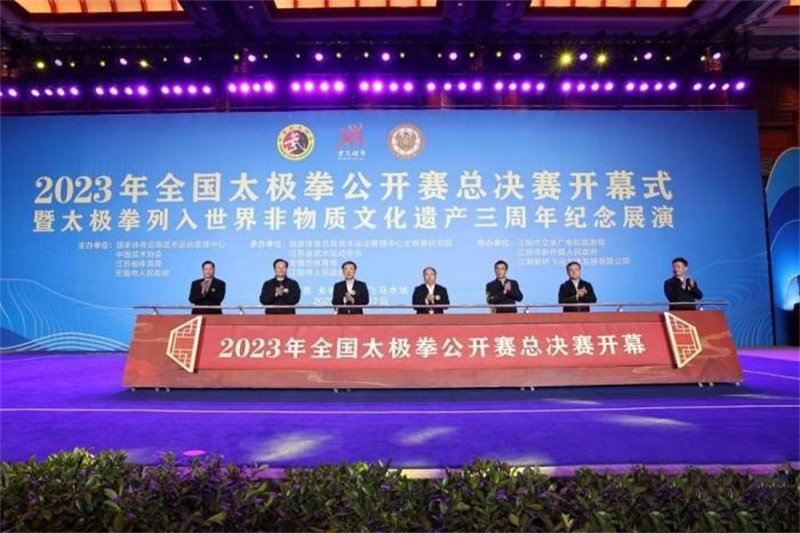

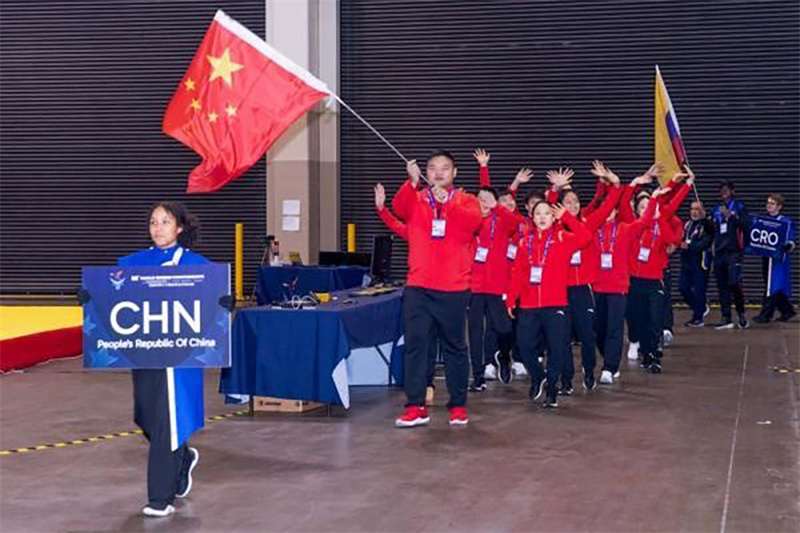
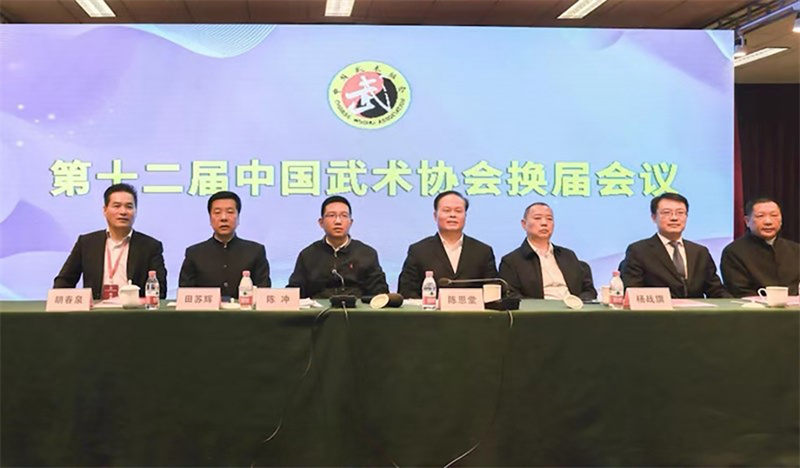
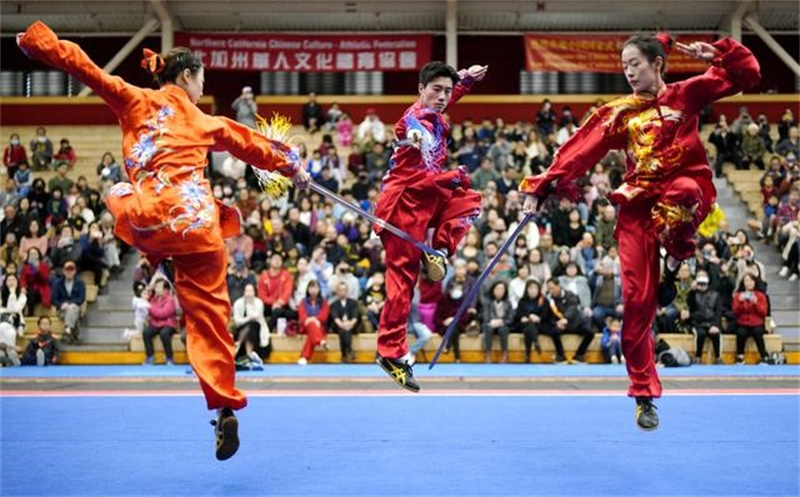
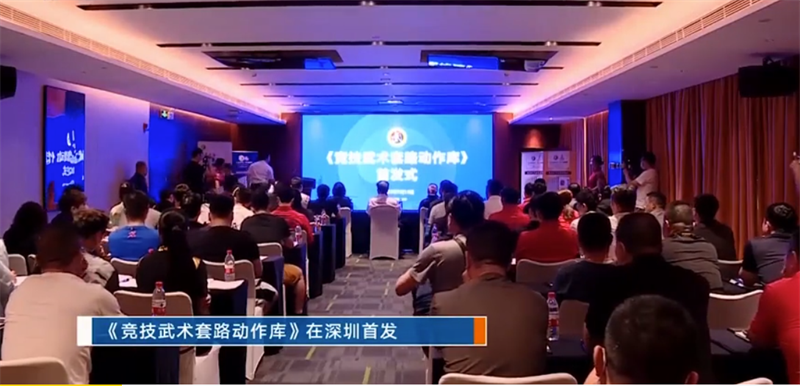
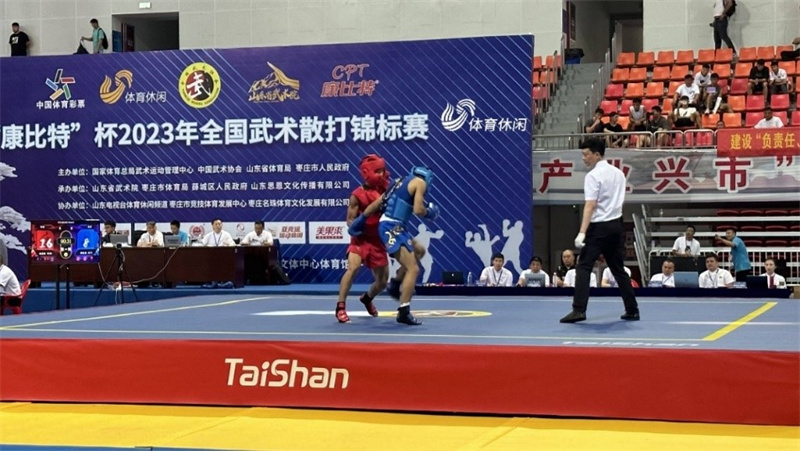


1. Gao Zhidan was elected President of the International Wushu Federation.
On November 16th, Gao Zhidan, director of the State Sports General Administration and president of the Chinese Olympic Committee, was elected as the new president of the International Wushu Federation at the 16th Congress of the International Wushu Federation held in Fort Worth, Texas, USA.
After his election, Gao Zhidan said at the congress that martial arts originated in China and belonged to the world. The rich cultural connotations contained in Wushu complement each other with Olympic values, and are highly compatible with the initiative of building a community of human destiny. The new Executive Committee of the International Wushu Federation will continue to strengthen the international popularization and promotion of Wushu, and make greater contributions to promoting the development of the Olympic Movement, enhancing exchanges and mutual learning among civilizations, building an open and inclusive world and building a community of human destiny.
2. The National Tai Ji Chuan Open Finals and the third anniversary exhibition of Tai Ji Chuan’s inclusion in the world intangible cultural heritage were held in Feima Watertown, Jiangyin, Wuxi, Jiangsu Province.
On December 17th, the opening ceremony of the 2023 National Tai Ji Chuan Open Finals and the third anniversary of Tai Ji Chuan’s inclusion in the world intangible cultural heritage were held in Feima Watertown, Jiangyin, Wuxi, Jiangsu. Liu Guoyong, deputy director of the State Sports General Administration and member of the party group, attended.
The National Tai Ji Chuan Open is a brand event of the National Fitness Tai Ji Chuan Health Project series. This year’s Open was launched on the National Fitness Day on August 8. From August to November, four competitions were held in Xi ‘an, Shaanxi, Chongqing, Shangqiu, Henan and Qian ‘an, Hebei.
3. Eleven members of the China Wushu Team in the Asian Games won 11 gold medals and became the biggest winner.
On September 28th, the Wushu competition of Hangzhou Asian Games came to an end in Xiaoshan Guali Cultural and Sports Center. China Wushu Team sent 11 players to compete in 11 events in this Asian Games, winning 11 gold medals and becoming the biggest winner.
Fourth, the 16th World Wushu Championship China topped the list with 15 gold medals.
On November 20th, the 16th World Wushu Championships was held in Fort Worth, Texas, USA. China won 15 gold medals, ranking first in the medal list. The Vietnamese team ranked second and third with 5 gold, 3 silver and 3 bronze, and the China Macau team ranked second and third with 5 gold, 2 silver and 4 bronze. China, Hong Kong, Singapore and Malaysia are separated by four to six.
5. The 12th Chinese Wushu Association was successfully changed.
On March 17th, the 12th General Meeting of Chinese Wushu Association was held in Zhuozhou, Hebei. The meeting produced a new leadership of the Chinese Wushu Association. Chen Entang was elected chairman of Chinese Wushu Association, Yang Zhanqi, Chen Chong, Wang Liangyu, Tian Su Hui, Zhou Jianping, Hu Chunquan and Zhao Xijin were elected vice-chairmen, and Chen Chong served as secretary-general.
Six, China Wushu team tour in the United States caused a sensation.
In late November, after the 16th World Wushu Championship, the China Wushu Team toured in Houston and San Francisco, causing a sensation, displaying China’s excellent traditional sports culture, strengthening cultural exchanges and blending between China and the United States, and enhancing the understanding and friendship between the Chinese and American peoples.
Seven, "Competitive Wushu Routine Action Library" was launched in Shenzhen.
On July 16th, the "Action Library of Competitive Wushu Routine" (hereinafter referred to as "Action Library") was launched in Shenzhen. The Action Library includes a series of books and videos, which are divided into 10 sub-libraries: Changquan, Knife, Stick, Sword, Gun, Nanquan, Nandao, Nangun, Tai Ji Chuan and Taiji Sword, and systematically summarizes the classic actions of Changquan, Nanquan and Tai Ji Chuan.
Eight, Wushu Sanda intelligent protective gear was officially launched in the national competition for the first time.
On August 10th, 2023, the "Kangbit Cup" National Wushu Sanda Championship opened in the Gymnasium of Zaozhuang Culture and Sports Center. This competition is the first time that Wushu Sanda intelligent protective gear has been used in a formal national competition since its development, which is of great significance to promoting the reform and innovation of new rules and creating a fair and just competition environment.
The 9th World Traditional Wushu Championship was held in Emei Mountain, Sichuan.
On August 28th, the 9th World Traditional Wushu Championship with the theme of "Huiding Emei Martial World" came to an end in Emei Mountain, Sichuan, and 6649 people from 53 countries and regions signed up for the competition, with a record scale.
Ten, Boston UFC292 Zhang Weili successfully defended the women’s grass weight gold belt.
On August 20th, Beijing time, UFC292 started in Boston, USA. After five rounds of fighting, Zhang Weili of China defeated Amanda Lemos of Brazil 288∶21 with absolute advantage, and successfully defended the women’s lawn weight gold belt.
[Close window]